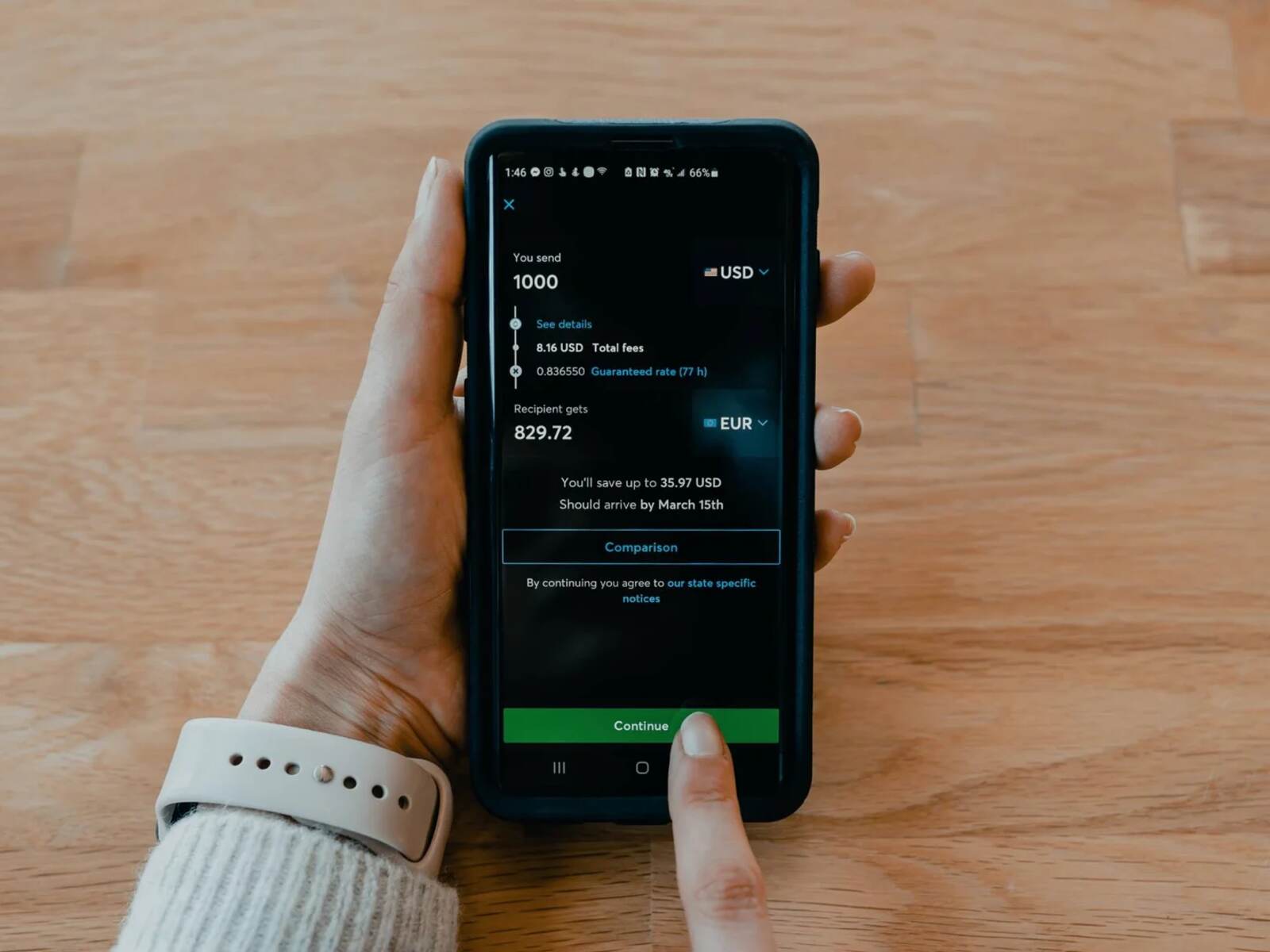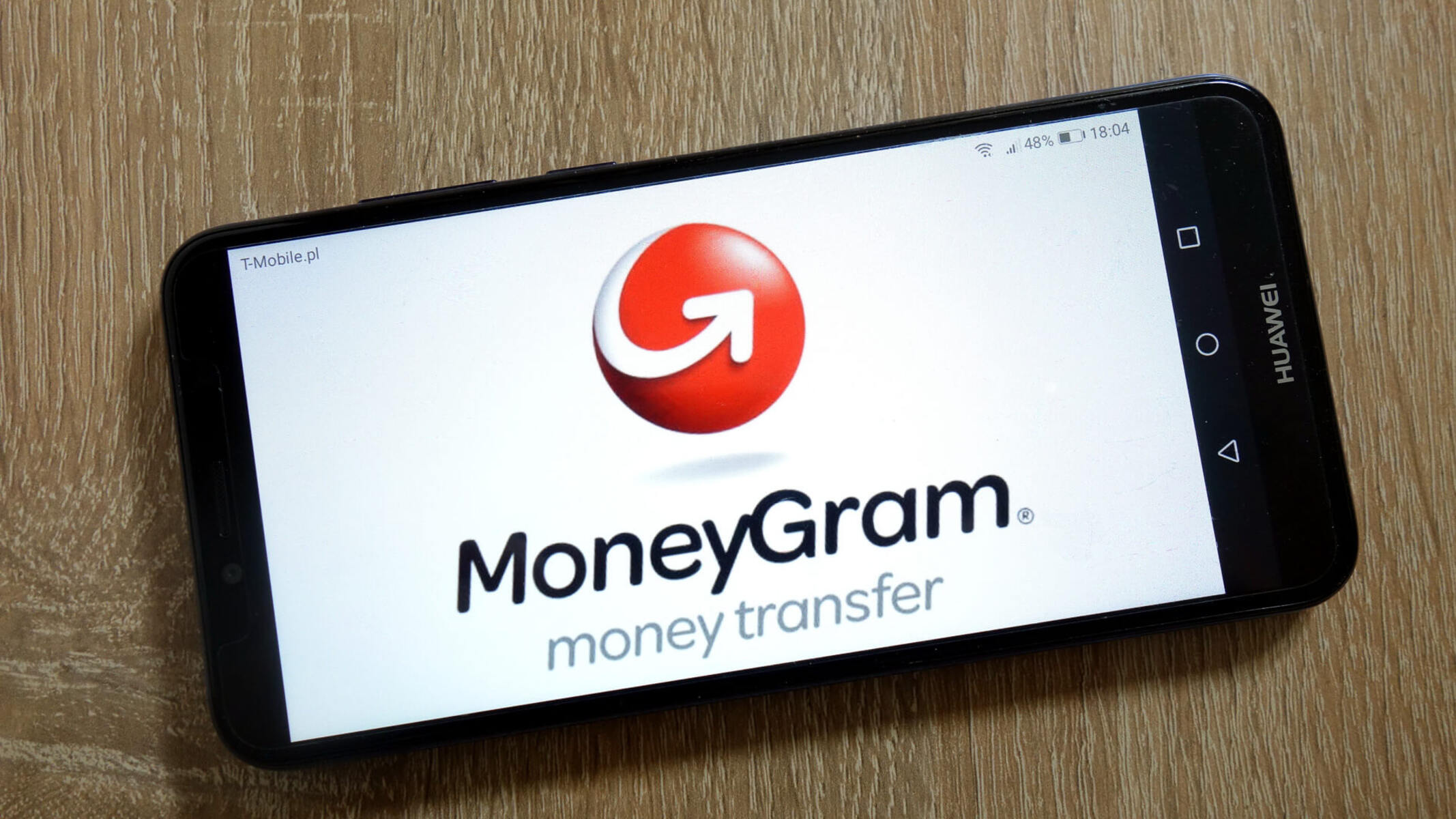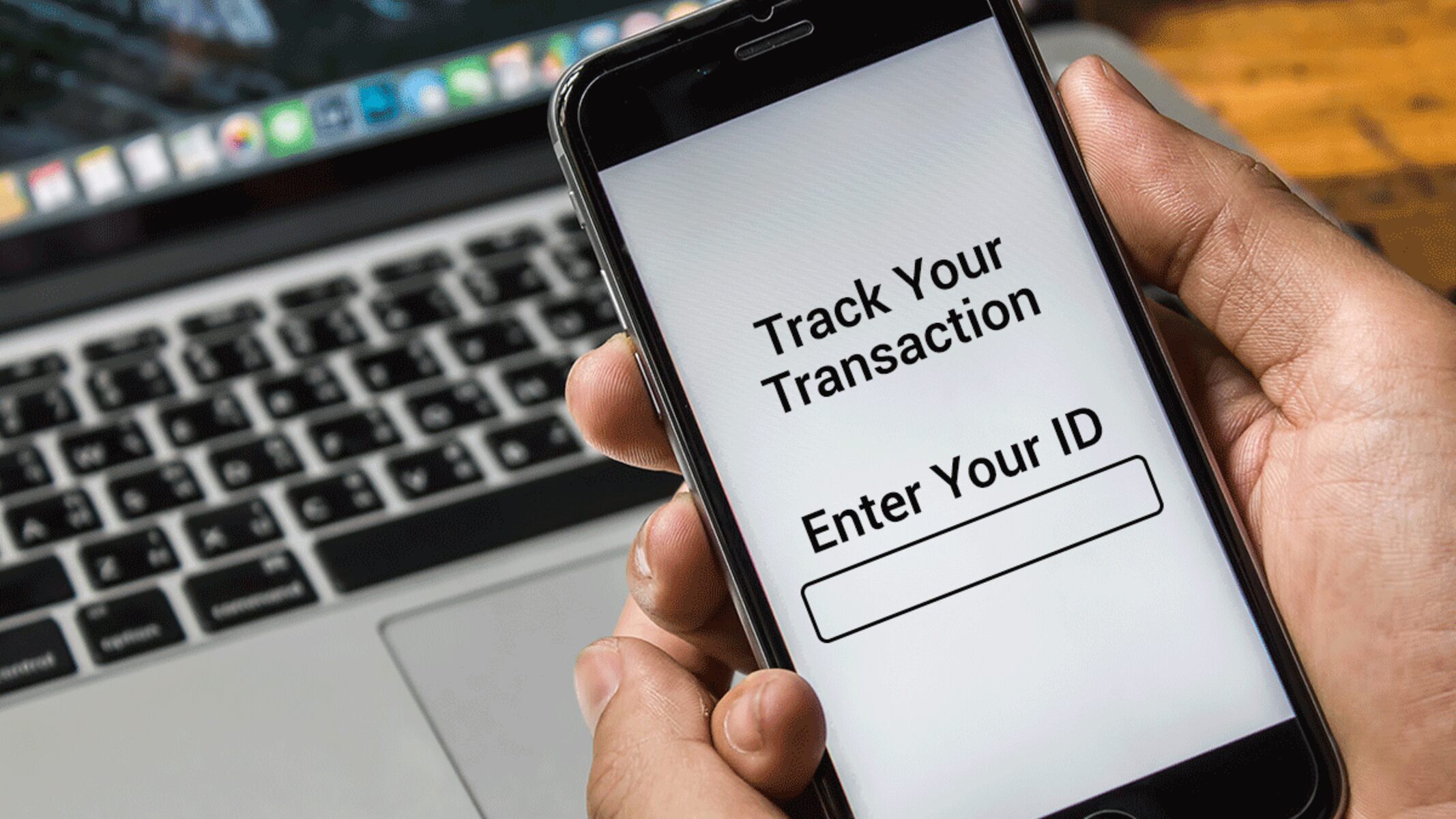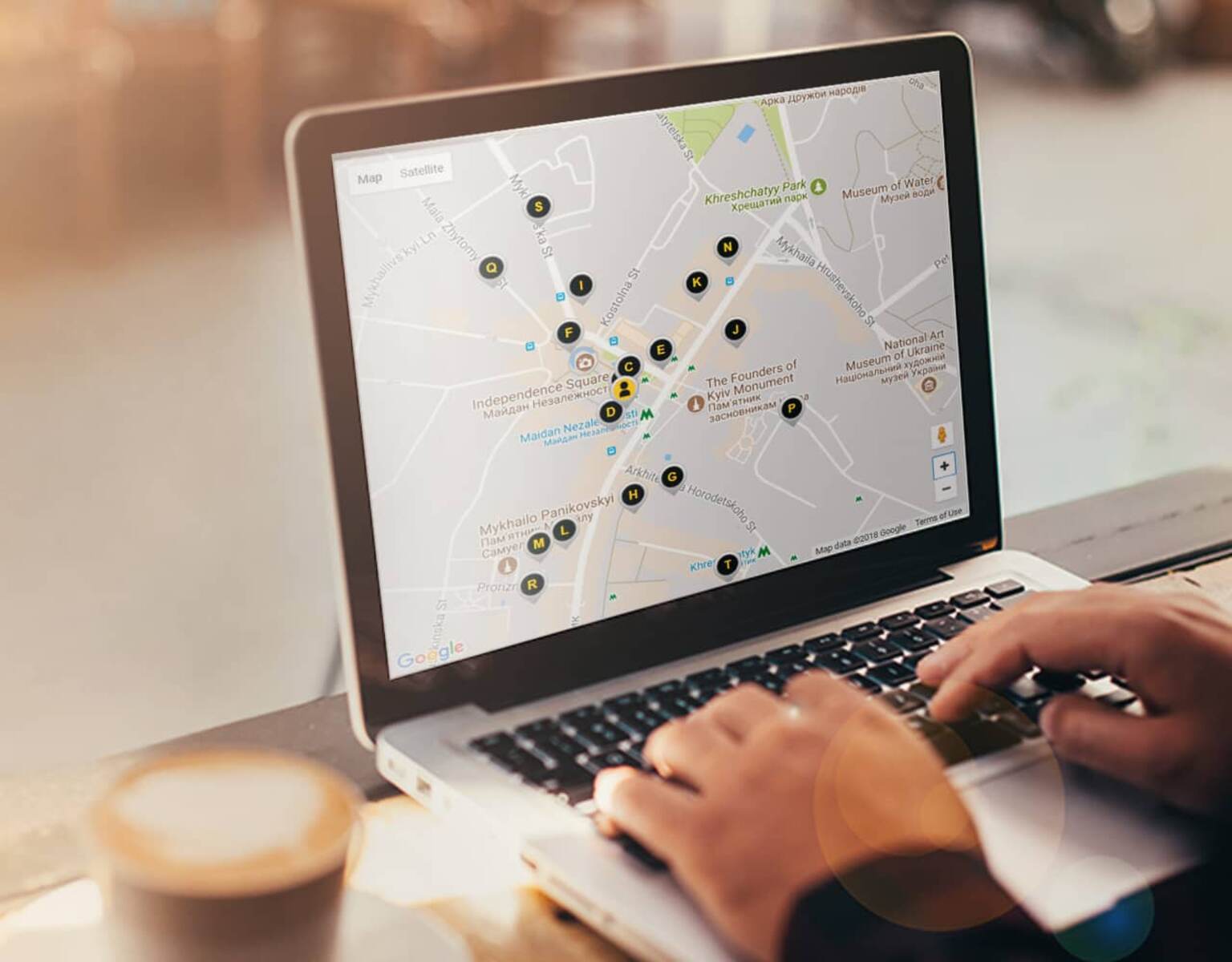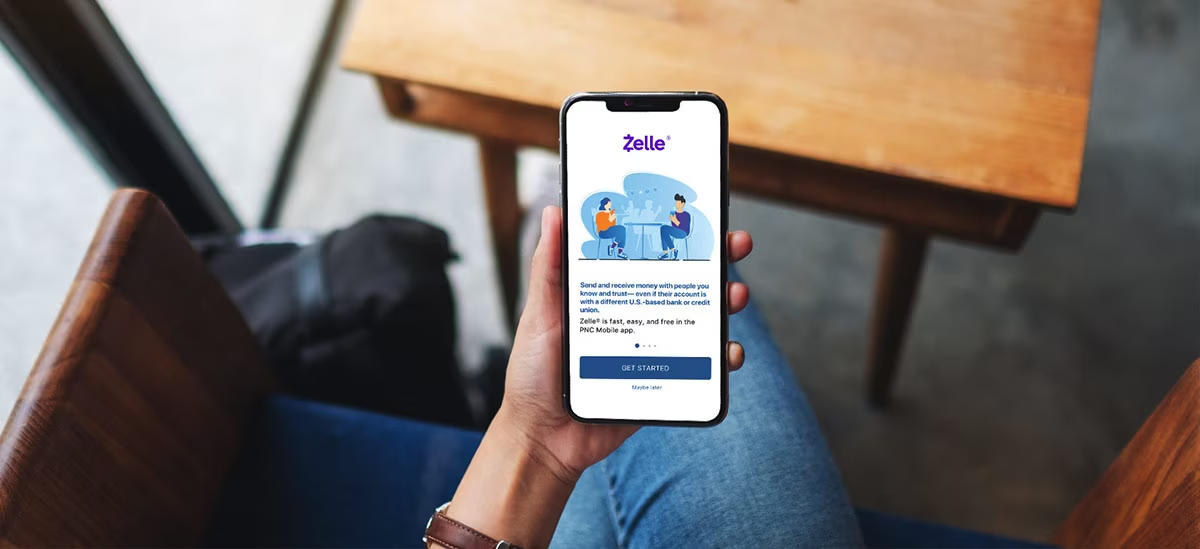Introduction
Welcome to our guide on how to receive money transfers safely. In today’s digital age, sending and receiving money online has become commonplace. While this offers convenience and ease, it also comes with potential risks and security concerns. Whether you’re receiving money from a friend or a business transaction, it’s crucial to take the necessary steps to protect your personal and financial information.
By following the tips and guidelines outlined in this article, you can ensure that your money transfers are received securely and that your sensitive data remains protected. From choosing a secure money transfer service to being cautious with sharing personal information online, we’ll cover all the essential practices that you need to know.
Receiving money transfers can come with their fair share of risks, such as phishing scams, identity theft, and unauthorized access to your financial accounts. Therefore, it’s important to stay informed and adopt strategies to safeguard yourself against these threats. By implementing the best practices and staying vigilant, you can ensure that your money transfers are completed safely and without any complications.
In the following sections, we will explore various ways to receive money transfers securely. These methods include choosing a secure money transfer service, keeping your personal information safe, using strong passwords and two-factor authentication, avoiding phishing scams and fraudulent emails, updating your operating system and antivirus software, using a VPN for added security, being cautious when sharing personal information online, avoiding public Wi-Fi networks, double-checking recipient information, and monitoring your bank account for any suspicious activity.
Now, let’s dive into the details and discover how you can receive money transfers safely and protect yourself from potential risks and security threats.
Choose a Secure Money Transfer Service
When receiving money transfers, selecting a secure and reputable money transfer service is paramount. With numerous options available, it’s essential to find a service that prioritizes security measures and protects your sensitive information.
Consider choosing a money transfer service that offers end-to-end encryption for your transactions. This type of encryption ensures that your financial data is securely transmitted and can only be accessed by the intended recipient. Look for services that utilize industry-standard encryption protocols, such as SSL (Secure Sockets Layer) or TLS (Transport Layer Security), to safeguard your information.
Additionally, opt for money transfer services that implement strong security measures, such as multi-factor authentication. This means that apart from a password, you will need to provide additional authentication, such as a verification code sent to your mobile device, to access your account. This adds an extra layer of protection and reduces the risk of unauthorized access.
Research the reputation and track record of the money transfer service before making your selection. Read reviews and testimonials from other users to gauge their satisfaction with the service’s security features and reliability.
Furthermore, check if the money transfer service is regulated and licensed by appropriate financial authorities. This ensures that they comply with industry standards and regulations, giving you peace of mind that your transactions are being conducted with a reputable and trustworthy provider.
Lastly, compare the fees and rates of different money transfer services. While security is of utmost importance, it’s also essential to consider the costs involved. Look for a service that offers competitive rates and transparent pricing, ensuring that you receive the best value for your money.
By choosing a secure money transfer service, you can rest assured that your transactions are conducted safely and your financial information remains protected. Take the time to research and compare different options to find the one that best matches your requirements.
Keep Your Personal Information Safe
When it comes to receiving money transfers, safeguarding your personal information is crucial to prevent identity theft and financial fraud. Here are some essential steps to keep your personal information safe:
1. Be cautious with sharing information: Avoid sharing sensitive personal details, such as your Social Security number or full date of birth unless absolutely necessary. Only provide this information to trusted entities and ensure that they have proper security measures in place.
2. Use strong, unique passwords: Create strong, unique passwords for your online accounts to reduce the risk of unauthorized access. Avoid using easily guessable information, such as your name or birthdate, and consider using a password manager to securely store and generate complex passwords.
3. Enable two-factor authentication: Activate two-factor authentication (2FA) whenever possible. This adds an extra layer of security by requiring a secondary verification method, such as a unique code sent to your mobile device, in addition to your password.
4. Be cautious with security questions: Avoid using commonly known or easily guessable answers to security questions. Instead, choose answers that are memorable but not readily available to others.
5. Secure your physical documents: Keep important documents, such as passports, driver’s licenses, and financial statements, in a secure location. Shred any documents containing sensitive information before disposing of them.
6. Be skeptical of unsolicited requests: Be wary of unsolicited emails, phone calls, or text messages asking for personal or financial information. Legitimate organizations will not ask you to provide sensitive information through these channels.
7. Regularly review your online accounts: Monitor your bank and financial accounts regularly for any unauthorized activity. Report any suspicious transactions or discrepancies to your bank or financial institution immediately.
8. Protect your devices: Keep your devices, such as smartphones, tablets, and computers, secure by using up-to-date antivirus software and keeping your operating system and applications updated with the latest security patches.
9. Be mindful of social media: Limit the personal information you share on social media platforms and adjust your privacy settings to restrict access to your profile and posts.
10. Educate yourself: Stay informed about the latest scams and fraud techniques. Familiarize yourself with common phishing tactics, such as fraudulent emails or text messages, and learn to spot warning signs of potential scams.
By following these guidelines, you can significantly reduce the risk of your personal information falling into the wrong hands and ensure a safer experience while receiving money transfers.
Use Strong Passwords and Enable Two-Factor Authentication
When it comes to safeguarding your accounts and protecting your financial information while receiving money transfers, using strong passwords and enabling two-factor authentication (2FA) are essential security measures. Follow these best practices to enhance the security of your online accounts:
Create strong, unique passwords: A strong password is a combination of uppercase and lowercase letters, numbers, and special characters. Avoid using easily guessable information like your name, birthdate, or common dictionary words. Make sure to use a different password for each of your accounts to prevent unauthorized access if one account gets compromised.
Use a password manager: Consider using a reputable password manager to generate and securely store your passwords. A password manager can also help you automatically fill in login credentials, reducing the risk of falling victim to phishing attacks or entering your password on malicious websites.
Enable two-factor authentication (2FA): Two-factor authentication adds an extra layer of security to your accounts by requiring a secondary verification method, typically a unique code sent to your mobile device, in addition to your password. This makes it significantly more difficult for hackers to gain access to your accounts, even if they manage to steal or guess your password.
Choose the right 2FA method: Most online platforms and services offer multiple 2FA options, such as text message codes, email verification, or authenticator apps. Avoid using SMS-based 2FA, as hackers can intercept text messages. Instead, opt for app-based authenticators like Google Authenticator or Authy, as they provide stronger security.
Keep your 2FA backup codes secure: When setting up 2FA, many platforms provide backup codes in case you lose access to your primary authentication methods. Store these codes in a secure location, such as a password manager or encrypted file, in case you need to regain access to your accounts.
Regularly update your passwords: Change your passwords periodically, especially if you suspect any account compromise or if there has been a known security breach. Keeping your passwords up to date reduces the risk of unauthorized access.
Be cautious of phishing attempts: Be vigilant of phishing scams attempting to trick you into revealing your login credentials. Genuine websites and services will never ask you to provide your password or 2FA codes via email or pop-up windows. Always double-check the URL and email sender’s address before entering any sensitive information.
Educate yourself and stay informed: Keep up with the latest security best practices and be aware of evolving hacking techniques. Stay informed about any security breaches or vulnerabilities that may affect the platforms and services you use, and take appropriate action promptly.
By using strong, unique passwords and enabling two-factor authentication, you significantly enhance the security of your accounts and reduce the risk of unauthorized access. These simple yet effective measures can go a long way in ensuring the safety of your personal and financial information when receiving money transfers.
Be Careful with Phishing Scams and Fraudulent Emails
One common tactic used by cybercriminals to gain access to your personal and financial information is through phishing scams and fraudulent emails. These deceptive methods can trick you into disclosing sensitive data or clicking on malicious links. To protect yourself while receiving money transfers, it’s crucial to be vigilant and follow these precautions:
Verify email senders: Always verify the sender’s email address before taking any action or clicking on links in an email. Cybercriminals often use email spoofing techniques to make their messages appear legitimate. Check for any suspicious or misspelled email addresses, and do not trust unsolicited emails, especially those claiming to be from financial institutions or money transfer services.
Think before you click: Be cautious of links or attachments in emails, even if they appear to come from trusted sources. Hover your mouse over the link to see the actual URL it leads to. If it seems suspicious or doesn’t match the expected destination, do not click on it. Instead, access the website directly from your browser or contact the sender through the official website or known contact information.
Check for red flags: Pay attention to warning signs of phishing emails, such as requests for personal or financial information, urgent or threatening language, grammatical errors, or generic greetings. Legitimate organizations usually address you by your name and provide specific details about your account or transaction.
Keep software up to date: Regularly update your operating system, web browser, and antivirus software to ensure you have the latest security patches and protections against phishing attempts. Outdated software can have vulnerabilities that cybercriminals can exploit.
Protect your personal information: Never provide personal or financial information in response to an email request. Legitimate organizations will not ask you to verify your details or update account information via email. If you receive such a request, contact the organization directly through their official website or known contact details.
Be cautious of urgent requests: Beware of emails that create a sense of urgency, such as claiming your account will be suspended if you don’t take immediate action. Scammers often use emotional manipulation to pressure you into taking hasty actions without considering the risks.
Use spam filters: Enable spam filters or use email clients that have built-in filters to help detect and divert potentially malicious or phishing emails to your spam folder. While spam filters are not foolproof, they can help reduce the number of suspicious emails that reach your inbox.
Report phishing attempts: If you come across a phishing email, promptly report it to your email service provider or the organization being impersonated. This can help protect others from falling victim to the same scam and aid in the takedown of fraudulent websites or email accounts.
By staying vigilant and following these precautions, you can protect yourself from falling victim to phishing scams and fraudulent emails. Remember, it’s always better to be skeptical and cautious rather than exposing your personal and financial information to potential risks.
Update Your Operating System and Antivirus Software Regularly
To ensure the highest level of security while receiving money transfers, it’s crucial to keep your operating system and antivirus software up to date. Regular updates provide important security patches and enhancements that protect against known vulnerabilities and emerging threats. Here’s why keeping your software updated is essential:
Protection against known vulnerabilities: Software updates often include fixes for known security vulnerabilities. By keeping your operating system up to date, you are ensuring that any identified weaknesses are patched, reducing the chances of exploitation by hackers.
Defense against emerging threats: Cybercriminals are continuously developing new techniques and malware to bypass security measures. Regular updates to your operating system and antivirus software equip you with the latest defenses against these evolving threats.
Improved performance and stability: Software updates not only address security concerns but also enhance the performance and stability of your system. New updates often include bug fixes and optimizations that can result in a smoother and more efficient computing experience.
Additional security features: Updates may introduce new security features that provide additional layers of protection, such as enhanced firewall settings, better encryption protocols, or advanced malware detection capabilities. By staying updated, you can take advantage of these enhanced security measures.
Automatic updates: Most operating systems and antivirus software offer automatic update options. Enabling this feature ensures that you receive the latest security patches and updates without manual intervention, reducing the risk of oversight or delay in protecting your system.
Regular scanning and threat detection: Antivirus software relies on up-to-date virus definitions to identify and eliminate threats effectively. By regularly updating your antivirus software, you ensure that it can detect and quarantine the latest viruses, malware, and other malicious software.
Set reminders for updates: If automatic updates are not available or suitable for your setup, make it a habit to check for updates regularly. Set reminders on your calendar or utilize built-in reminder apps on your devices to ensure you don’t forget to update your operating system and antivirus software.
Be cautious of fake update notifications: In some cases, cybercriminals may send fake software update notifications to trick users into downloading malware. To ensure you’re installing legitimate updates, always download updates from official sources or use the built-in update mechanisms of your operating system or antivirus software.
By prioritizing regular updates to your operating system and antivirus software, you can significantly reduce the risk of security breaches and protect your personal and financial information against potential threats.
Use a VPN for Added Security
When it comes to receiving money transfers securely, using a Virtual Private Network (VPN) is an effective way to enhance your online security and privacy. A VPN creates a secure, encrypted connection between your device and the internet, providing several benefits:
Data encryption: A VPN encrypts your internet traffic, ensuring that any data transmitted between your device and the VPN server is protected and unreadable to anyone trying to intercept it. This is especially important when accessing sensitive information, such as logging into your online banking or receiving money transfers.
Privacy protection: By using a VPN, you can help protect your online privacy. Your IP address is masked, making it difficult for websites and online services to track your location and browsing activities. This helps prevent targeted advertising and potential invasion of your privacy.
Bypass geo-restrictions: Some online services and websites may have region-specific restrictions that limit access to certain content or platforms. With a VPN, you can bypass these restrictions by connecting to servers in different locations, allowing you to access content and services as if you were physically in that location.
Protection on public Wi-Fi networks: Public Wi-Fi networks, such as those found in cafes, airports, or hotels, are often unsecured and vulnerable to attacks. Using a VPN encrypts your internet connection, ensuring that your data remains secure and protected from potential hackers or eavesdroppers on the same network.
Added security for remote work: If you receive money transfers while working remotely or accessing sensitive financial information outside your home or office, using a VPN adds an extra layer of security. It helps protect your data from being intercepted or accessed by unauthorized individuals on open or unsecured networks.
Choose a reputable VPN provider: When selecting a VPN service, opt for a reputable provider with a strong track record in security and privacy. Research and compare different providers, looking for features such as a strict no-logs policy, strong encryption protocols, and a wide range of server locations to choose from.
Update your VPN software: Just like other software, VPN clients or applications should be regularly updated to patch any security vulnerabilities that may arise. Ensure that you have the latest version installed to benefit from the most up-to-date security features.
Remember to connect to your VPN: To enjoy the protection of a VPN, make it a habit to connect to the VPN service whenever you access the internet, particularly when handling sensitive information or conducting financial transactions.
By using a VPN, you can enhance your online security and protect your personal information while receiving money transfers. Whether you’re accessing the internet from home, on-the-go, or while traveling, a VPN offers an added layer of protection and peace of mind.
Be Cautious When Sharing Personal Information Online
When receiving money transfers online, it’s essential to exercise caution and be mindful of the personal information you share. While the internet offers convenience and connectivity, it also poses risks to your privacy and security. Here are some important tips to keep in mind when sharing personal information online:
Think before you share: Before providing any personal information, consider if it is necessary. Avoid sharing unnecessary details that could potentially be used for identity theft or other fraudulent activities.
Use reputable websites and platforms: When sharing personal information, rely on trustworthy and reputable websites or platforms. Look for secure web addresses (URLs starting with “https://”) and verify the legitimacy of the website or platform before sharing sensitive information.
Limit social media exposure: Be mindful of the personal information you share on social media platforms. Limit the amount of personally identifiable information you disclose, such as your full name, address, phone number, or birthdate. Adjust privacy settings to control who can view your posts and profile.
Be cautious of third-party applications: Exercise caution when granting permissions to third-party applications that request access to your personal information. Review their privacy policies and only grant access to the information necessary for the application to function.
Be skeptical of requests for personal information: Be cautious of requests for personal information through unsolicited emails, phone calls, or messages. Legitimate organizations will not ask for sensitive information, such as passwords or social security numbers, via these channels. Verify the identity of the requester through official channels before sharing any information.
Secure your devices: Make sure your devices, including smartphones, tablets, and computers, are protected with strong passwords or biometric authentication. Regularly update your software and operating system to address potential security vulnerabilities.
Be cautious with email attachments: Be wary of email attachments, particularly from unknown senders. Malicious attachments can contain viruses or malware that compromise your personal information. Only open attachments from trusted sources after verifying their authenticity.
Use secure communication methods: When sharing sensitive information, such as account details or financial information, use encrypted communication channels. Secure messaging applications or encrypted email services can help ensure that your data remains private and protected.
Monitor your online presence: Regularly review your online accounts, including social media, online banking, and email accounts, for any suspicious activity. Enable notifications or alerts that notify you of any changes or unauthorized access to your accounts.
Be cautious with public Wi-Fi: Avoid sharing personal information or accessing sensitive websites when connected to public Wi-Fi networks. These networks are often unsecured and can be easily infiltrated by hackers. If necessary, use a VPN to encrypt your internet connection and protect your data.
By practicing these precautions, you can minimize the risk of your personal information being compromised while receiving money transfers online. Stay vigilant and be proactive in protecting your privacy and security in the digital realm.
Avoid Public Wi-Fi Networks
While it may be tempting to connect to public Wi-Fi networks when receiving money transfers or conducting online transactions, it’s important to be aware of the potential risks associated with these networks. Public Wi-Fi networks, such as those found in coffee shops, airports, or hotels, often lack the necessary security measures to protect your personal information. Here’s why you should avoid using public Wi-Fi networks:
Lack of encryption: Many public Wi-Fi networks are unencrypted or use weak encryption, making it easier for hackers to intercept and access your internet traffic. This means that any information you transmit, such as login credentials or financial details, can be captured and potentially used for malicious purposes.
Man-in-the-middle attacks: Public Wi-Fi networks are susceptible to man-in-the-middle attacks, where a hacker intercepts the communication between your device and the network. This allows them to potentially capture sensitive information or even alter the data being transferred without your knowledge.
Fake Wi-Fi networks: Hackers can set up fake Wi-Fi networks with names that appear legitimate, making it easy for unsuspecting users to connect. These networks are designed to collect your personal information or trick you into entering sensitive data.
Weak network security: Public Wi-Fi networks are typically shared by numerous users, making them vulnerable to attacks targeting the entire network. If one user on the network has malware or malicious intentions, it can potentially impact other connected devices.
Untrusted network administrators: In some cases, individuals with malicious intent may pose as network administrators to gain access to your device or monitor your online activities. These individuals can potentially intercept your data or install malicious software on your device.
Tips for avoiding public Wi-Fi risks:
- Use your mobile data or personal hotspot: Instead of relying on public Wi-Fi, consider using your mobile data plan or creating a personal hotspot on your smartphone. This way, you can ensure a secure and encrypted connection.
- Use a trusted VPN: If you must use public Wi-Fi, connect to a reputable Virtual Private Network (VPN) service. A VPN encrypts your internet traffic, protecting it from prying eyes and potential hacking attempts.
- Avoid accessing sensitive information: Avoid accessing sensitive websites, such as online banking or financial accounts, while connected to public Wi-Fi networks. Wait until you have a secure and trusted network connection to perform such transactions.
- Disable auto-connect features: Turn off any auto-connect features on your devices to prevent them from automatically connecting to unsecured Wi-Fi networks without your knowledge.
- Verify hotspot legitimacy: If you do choose to use a public Wi-Fi network, verify with an appropriate authority or staff member that the network you’re connecting to is legitimate and secure. Double-check the network name and ask about the security protocols in place.
- Enable firewall and antivirus software: Make sure your device’s firewall and antivirus software are activated and up to date. This adds an extra layer of protection against potential threats while connected to public Wi-Fi networks.
By avoiding public Wi-Fi networks or taking necessary precautions, you can significantly reduce the risk of your personal information being compromised. Always prioritize your online security and protect your sensitive information while receiving money transfers or engaging in other online activities.
Double Check the Recipient Information
When receiving money transfers, it’s crucial to carefully double-check the recipient information to ensure that the funds are sent to the intended recipient. Mistakes or inaccuracies in the recipient’s details can lead to funds being sent to the wrong person or account. To mitigate this risk, follow these best practices to double-check recipient information:
Verify the recipient’s identity: Before initiating the money transfer, ensure that you have accurate and up-to-date information about the recipient. This includes their full name, contact details, and any unique identifiers, such as an account number or username.
Confirm the account details: If you are transferring funds to a bank account or online payment service, double-check the recipient’s account details, including the account number, routing number, or any other necessary information. Make sure the information matches the recipient’s account to avoid sending funds to the wrong account.
Contact the recipient: If you have any doubts or concerns about the recipient’s information, reach out to them directly to confirm the details. Use a trusted means of communication, such as a verified phone number or email address, to ensure you are speaking to the legitimate recipient.
Avoid relying solely on email instructions: Be cautious when following instructions received via email alone, especially if they contain last-minute changes to the recipient’s information. Email accounts can be compromised or used for fraudulent activities. Always cross-verify any changes through a separate communication channel, such as a phone call or in-person conversation.
Be vigilant of imposters and scams: Watch out for impersonators who may try to deceive you by posing as the intended recipient. Scammers can use various tactics, such as spoofed emails or phone calls, to trick you into sending funds to the wrong person. Verify the recipient’s identity using multiple reliable sources before proceeding with the money transfer.
Check for typos and errors: Pay close attention to the recipient’s information and check for any typos, misspellings, or incorrect characters. Even a small mistake in account numbers or email addresses can result in funds being sent to the wrong recipient.
Take time to review: Before confirming the money transfer, take a moment to review all the recipient information you have entered. Verify the accuracy of the details, ensuring that there are no discrepancies or inconsistencies. This simple step can help prevent any potential errors.
Keep records of transactions: After completing the money transfer, maintain a record of the transaction details, including the recipient’s information, date, and amount sent. This documentation can be useful for future reference and for resolving any discrepancies or disputes.
Report any suspicious activities: If you notice any unusual or suspicious activity related to the recipient’s information or if you suspect fraudulent behavior, report it to the appropriate authorities or your financial institution immediately. Prompt action can help mitigate potential damage and protect others from falling victim to fraud.
By double-checking recipient information and taking the necessary precautions, you can minimize the risk of sending money to the wrong person or account. Always exercise caution and verify the details to ensure a smooth and accurate money transfer process.
Monitor Your Bank Account and Report Suspicious Activity
When receiving money transfers, it’s important to actively monitor your bank account for any suspicious activity. Regularly reviewing your transactions and promptly reporting any unauthorized or fraudulent charges is crucial to protecting your finances. Here’s why you should monitor your bank account and how to report suspicious activity:
Importance of monitoring your bank account:
Early detection of unauthorized transactions: By regularly monitoring your bank account, you can quickly identify any unfamiliar or suspicious transactions. This allows you to take immediate action and minimize potential damage or losses.
Protecting against identity theft: Monitoring your bank account can help detect signs of identity theft. Unauthorized charges, suspicious withdrawals, or changes in your account information can indicate that someone has gained unauthorized access to your account or personal information.
Identifying errors or discrepancies: Monitoring your bank account allows you to spot errors or discrepancies in your transactions. This can include duplicate charges, incorrect amounts, or billing errors. Reporting these issues to your bank ensures that they are rectified promptly.
How to monitor your bank account:
Regularly review your transactions: Take the time to review your bank account activity on a regular basis. Many banks offer online or mobile banking platforms that allow you to easily track and monitor your transactions. Look out for any unfamiliar or suspicious charges.
Set up account alerts: Take advantage of account alerts provided by your bank. These alerts can notify you of certain account activities, such as large transactions, withdrawals, or changes to your account information. By customizing these alerts, you can stay informed of any potentially fraudulent or unauthorized activity.
Keep track of receipts and documentation: Retain receipts and transaction records for your reference. This makes it easier to compare your bank statements and track your transactions efficiently. It also helps when reporting any discrepancies or disputes with your bank.
Check your credit report: Regularly review your credit report to ensure all information is accurate and up to date. Monitoring your credit report can help detect any unauthorized accounts, inquiries, or potential fraudulent activity that may affect your financial well-being.
How to report suspicious activity:
Contact your bank immediately: If you notice any unauthorized or suspicious activity in your bank account, contact your bank’s customer service or fraud department immediately. Provide them with all relevant details and follow their instructions for reporting and resolving the issue.
File a dispute: If you identify any fraudulent charges or believe you are a victim of identity theft, file a dispute with your bank. They will investigate the matter and take appropriate action to protect your account and refund any fraudulent charges.
Report to authorities: If you suspect criminal activity or believe you are a victim of fraud, report the incident to your local law enforcement agency, as well as the appropriate fraud reporting organizations or consumer protection agencies in your country.
Stay vigilant and proactive: Continuously monitoring your bank account and reporting any suspicious activity is an ongoing commitment to protecting your financial well-being. Regularly reviewing your account activity and maintaining open communication with your bank helps ensure that your finances remain secure.
By actively monitoring your bank account, you can detect and address any suspicious activity promptly. This proactive approach will help mitigate potential damages and safeguard your financial interests.
Conclusion
Receiving money transfers safely is a priority in today’s digital landscape. By implementing the practices outlined in this guide, you can take important steps to protect your personal and financial information. Choose a secure money transfer service, keep your personal information safe, use strong passwords, enable two-factor authentication, be cautious of phishing scams, update your operating system and antivirus software regularly, use a VPN for added security, avoid sharing personal information online, stay away from public Wi-Fi networks, double-check the recipient information, monitor your bank account, and report any suspicious activity promptly.
Remember, it’s vital to stay vigilant and remain cautious when handling sensitive information. Technology continually evolves, and so do the strategies employed by cybercriminals. Therefore, it’s important to stay informed about the latest security best practices and emerging threats.
By incorporating these practices into your daily routine, you can significantly reduce the risk of falling victim to identity theft, fraud, or other security breaches. Protecting your personal and financial information should always be a top priority to ensure a safe and secure experience when receiving money transfers.
As a responsible individual, your commitment to following these guidelines will help you foster a proactive and secure online environment where you can confidently receive money transfers, knowing that your personal and financial information remains protected.







